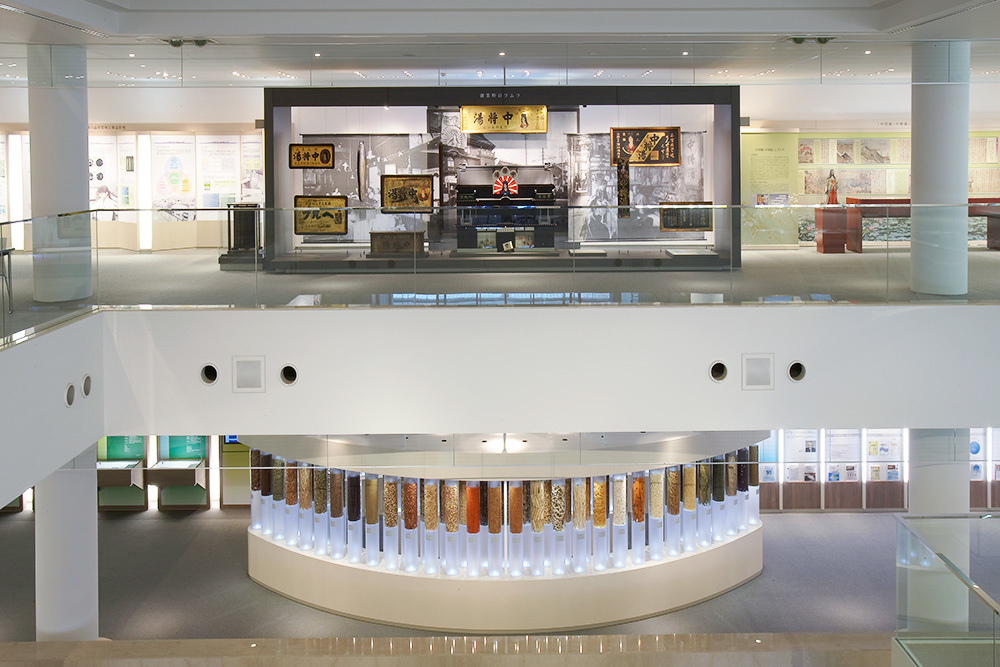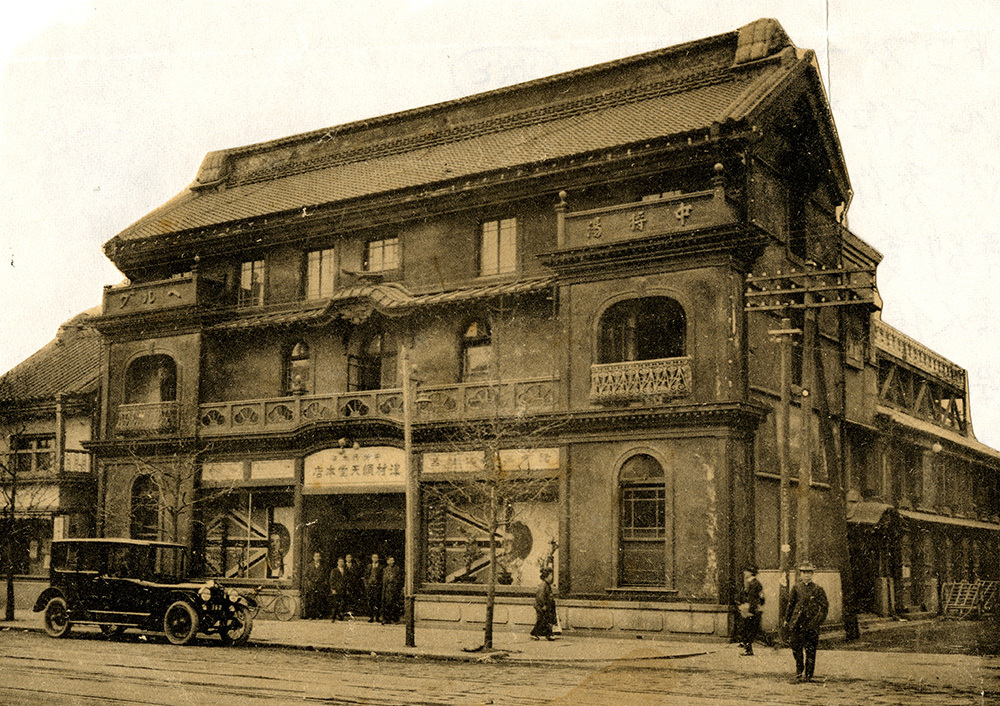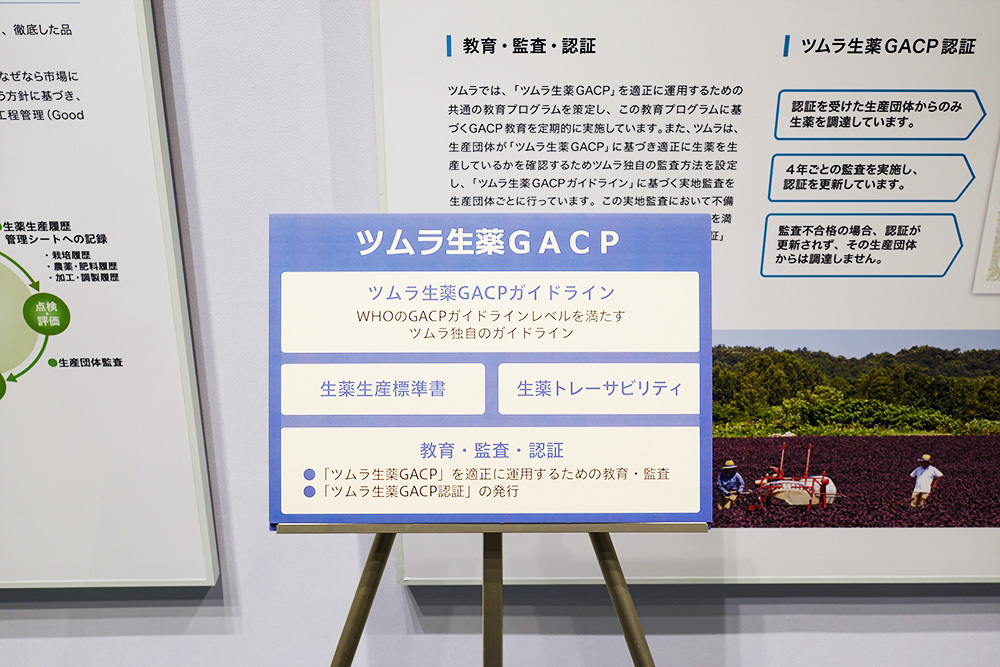Note: This website was automatically translated, so some terms or nuances may not be completely accurate.
Tsumura Kampo Memorial Museum: Conveying the Tradition and Innovation of Kampo

Corporate museums occupy a buffer zone straddling both the academic realm of "museums" and the business domain of "corporations." They are organizations that collaborate diversely with corporate departments such as public relations, branding, advertising, and human resources. In this series, PR professionals will introduce various museums run by corporations and discuss their roles, functions, and potential.
Kampo medicine is a form of medicine created by combining crude drugs found in nature, such as plants and minerals. Its efficacy has been verified through thousands of years of therapeutic experience and has been systematized as Kampo prescriptions. To pass on the achievements of these predecessors to future generations and to serve as a hub for disseminating information about Kampo, which continues to evolve through the scientific understanding of modern medicine and pharmacology, Tsumura operates the corporate museum "Tsumura Kampo Memorial Museum." Under the management philosophy of "Scientifically Exploring Nature and Health," this article introduces what Tsumura aims to convey through this museum.
Reporting and Text: Mina Sakai (PR Consulting Dentsu Inc.)

About an hour by train from Tokyo lies Ami Town in southern Ibaraki Prefecture. The Tsumura Kampo Memorial Hall consists of a two-story building at the center of the Tsumura Ibaraki Factory grounds and a medicinal herb sample garden behind it. Originally opened in 1992 for medical professionals, the hall was renovated in 2008 as part of the company's 115th anniversary commemorative project, adopting the concept of "Learning, Understanding, and Enjoying Kampo and Crude Drugs."
Inside, the museum systematically introduces the origins of Kampo medicine, displaying historically valuable books on Kampo and crude drugs, exhibiting over 100 types of raw crude drugs, and showcasing the manufacturing processes and quality control of Kampo formulations.
The Latest Hub for "Scientific Exploration of Nature and Health"

With a total floor area of 1,611 square meters, the facility utilizes a central atrium space to create an open, bright atmosphere where exhibits can be viewed at a glance. The renovated Tsumura Kampo Memorial Hall received the 2008 Good Design Award (Public Building Space / Civil Engineering / Landscape).
Primarily targeting medical professionals, this memorial hall—which welcomes approximately 4,000 visitors annually—emphasizes educational functionality. Currently, all university medical, pharmacy, and related health science departments offer opportunities to study Kampo medicine. In 2023, around 1,200 students, mainly from medical, pharmacy, and nursing departments, visited for tours.
The exhibits aim to shift "from displays to interactive experiences." While much of the content—including specialized information and historical materials related to Kampo medicine—can be complex, the layout is carefully designed for accessibility. The focus extends beyond Kampo's history to convey the therapeutic principles of Kampo medicine and Tsumura's quality control initiatives.

Kampo is unique to Japan
Many people likely associate Tsumura with "Kampo medicine." Originally, East Asia had three distinct medical systems: "Chinese medicine," "Korean medicine," and "Kampo medicine." Chinese medicine originated in China, Korean medicine in Korea, and Kampo medicine in Japan.
Kampo medicine is the medical system that arrived in Japan from China around the 5th to 6th centuries and developed independently from the Muromachi period through the Edo period and beyond. The name "Kampo" originates from the Edo period, when Western medicine introduced from the Netherlands was called "Ranpo" (Dutch medicine), and the traditional Japanese medicine was distinguished as "Kampo" (Chinese medicine). The first floor of the Tsumura Kampo Memorial Museum displays the history of Kampo medicine, while the second floor exhibits medicinal tools from the Edo period, allowing visitors to learn about its origins.

Believing that "Good medicine will always sell"
Tsumura's predecessor, "Chujo-to Honpo Tsumura Juntendo," was founded in Nihonbashi in 1893 (Meiji 26) to sell the women's medicine "Chujo-to." It is a representative Japanese "100-year company" with over 130 years of history.
The "Juntendo" in its original name signifies "following the way of heaven," embodying the philosophy that "those who follow heaven's laws prosper, while those who defy them perish" and "by following heaven's will, we fulfill people's wishes." This reflects Tsumura's strong conviction that "good medicine will always sell." The Tsumura Kampo Memorial Museum showcases the company's numerous initiatives undertaken under this guiding principle.

One such initiative introduced is the strategy implemented by the founder, Tsumura Jūshā, to promote Chūjō-yu immediately after founding the company. Japan at that time was in an era of "leaving Asia for Europe," and the government's strong push to introduce Western medicine led to steady progress in the Westernization of medicine. Two years after founding the company, in 1895 (Meiji 28), the "Petition for the Continuation of Traditional Chinese Medicine" was rejected by the Imperial Diet. Western medicine became the only recognized form of medicine for licensed physicians, leading to a period of decline where the number of doctors and researchers aspiring to practice Kampo medicine steadily decreased.
However, against the backdrop of the "Wealth and Military Strength" policy, military doctors dominated the field, leaving the general populace, especially women and children, far from benefiting from Western medicine. Driven by a strong conviction to "stand by women" and a belief that "manufacturing and selling Chujo-to would be my life's work," Shigeya undertook various initiatives, believing in the restoration of traditional Chinese medicine. The museum displays items like newspaper advertisements—a novelty at the time—and the original gold signboard from the founding era.
The Legend of Princess Chujo
Where did the original formula for this Chujo-yu come from? Chujo-yu was a miraculous remedy for women's ailments, passed down for generations in the Fujimura family (Uda City, Nara Prefecture), the maternal lineage of Shigeya, whose family had a long history in the medical profession. The origin of this medicine is also preserved in the "Princess Chujo Legend," which has been performed in Noh and Joruri.
In 747 (Tenpyō 19) during the Nara period, Fujiwara no Toyonari, the great-grandson of Fujiwara no Kamatari, and his wife, Lady Murasaki, welcomed a long-awaited daughter, whom they named Princess Chūjō. However, when the princess was five, her mother died. Her father took a second wife, but the stepmother hated the princess and eventually plotted to kill her. When the princess was fourteen, the stepmother ordered a retainer to kill her. The kind-hearted retainer could not bring himself to kill her and instead hid her on Mt. Hihari.
The following year, the princess was discovered by her father and brought back to the capital. However, she desired no worldly glory and entered the priesthood at Taimadera Temple. It is said that it was there she gained knowledge of medicinal herbs and formulas. This Princess Chujo is said to have first sought refuge at the aforementioned Fujimura family home on Mount Hihari. This encounter began their relationship, and she passed down a secret medicine highly effective for women's ailments to the Fujimura family. This became the Fujimura family's hereditary medicine, "Chujo-yu."

Can Kampo Medicine Be Revived?
Since its founding, Tsumura has focused on returning corporate profits to society. Beyond manufacturing and selling medicines, it has also prioritized research and worked to popularize Kampo. The founder, Shigeya, visited Europe in 1923 (Taisho 12) and was deeply impressed by how local pharmaceutical companies established research institutes to contribute to society. This inspired him to open a research institute in Kamimeguro, Tokyo, and a medicinal herb garden in Chofu, Tokyo, in 1924 (Taisho 13). The medicinal herb garden later became the largest of its kind in the East. Today, the research institute is located within the Ibaraki Factory grounds, where research continues.
Subsequently, due to events like the Pacific War, the second president, Shigeya Tsumura, struggled to maintain the company. In 1957 (Showa 32), some time after the war's end, Tsumura Juntendo opened a clinic in Nihonbashi, Tokyo, dedicated to Kampo diagnosis. Simultaneously, it began accumulating clinical data. This embodied and carried forward Tsumura Juntendo's longstanding research spirit. Through the collaboration of its three facilities – the "Research Institute," "Medicinal Herb Garden," and "Clinic" – Tsumura Juntendo solidified the foundation for Kampo's revival.
Then, in 1976 (Showa 51), 33 Tsumura Kampo formulations were listed in the National Drug Price List and designated as insurance-covered drugs. By 1987 (Showa 62), 129 formulations were listed. As of 2024, 148 types of Kampo medicines are covered by insurance in Japan, with Tsumura holding approximately 83% of the medical Kampo formulation market share. The Tsumura Kampo Memorial Hall displays not only vintage packaging but also samples of medical Kampo preparations and the raw herbal medicines used as ingredients. Pharmacy students who visit can actually touch and study these samples.
The quality of Kampo starts in the fields
In 1988 (Showa 63), the company changed its name from Tsumura Juntendo to Tsumura. Adopting the motto "Scientifically Approaching Nature and Health," it continues to this day. One area Tsumura focuses on is the "quality of raw medicinal herbs."
The "raw herbs" used in Tsumura's Kampo medicines are cultivated in strict compliance with GACP (Good Agricultural and Collection Practice), a standard established by organizations like the WHO for medicinal plants, detailing regulations from cultivation to shipment. The exhibition also devotes significant space to introducing Tsumura's "traceability" system, which allows tracking product history from the cultivation stage of raw herbal materials through distribution, manufacturing, and quality control. This quality management system is clearly conveyed through the exhibition as one of Tsumura's proud achievements.

Opening of the Virtual Kampo Memorial Hall
While the Tsumura Kampo Memorial Hall is open to healthcare professionals, for those outside the field who are interested in Kampo medicine, Tsumura opened the Virtual Kampo Memorial Hall "Hello! TSUMURA Virtual Kampo Memorial Hall" in 2020. This provides a simulated experience of the memorial hall.
This virtual miniature version of the Tsumura Kampo Memorial Hall introduces various information—such as the company's history, the history of Kampo, and the manufacturing process of Kampo preparations—utilizing videos and animations. The hall also hosts "Tsumura Kampo Memorial Hall Online Tours" connected in real-time via Zoom. These online tours, designed for middle and high school students within the prefecture, general citizens, and medical professionals, cover topics like Kampo history and the Kampo medicine manufacturing process, following the same flow as an in-person tour of the memorial hall. Furthermore, starting in 2022, during the summer vacation period, the museum offers online tours for elementary school fifth graders through junior high school students nationwide, including those outside the prefecture. These tours incorporate quizzes to make learning fun, providing a broad opportunity to learn about Kampo.

Tradition and Innovation
Founded with a strong commitment to "supporting women," Tsumura has dedicated 130 years to Kampo medicine, predating even the discovery of penicillin and X-rays. Today, it addresses various disease areas while also aiming to scientifically advance the "subclinical disease" field and promote next-generation healthcare.
Pre-disease is a concept that views the state of mind and body not as a dichotomy between health and illness, but as a continuous spectrum of change between the two. It encompasses the entire process of this change. Its importance was also incorporated into the national "Health and Medical Strategy" approved by the Cabinet in February 2017. In Japan, now facing a super-aged society, the concept of pre-disease and the role of Kampo medicine in addressing it are becoming increasingly significant.
Within Tsumura's fundamental principle of "Tradition and Innovation," tradition is something built only through continuous innovation. As a key player in Japan's traditional medicine field, Tsumura believes it is vital to recognize that, to protect and develop Japanese Kampo, the company itself must be the one to disseminate it. The Tsumura Kampo Memorial Museum plays a central role in this endeavor. The museum will continue to serve as a vital facility, documenting Tsumura's tradition and innovation and communicating them widely to society.
[Editor's Note] (From the Web Dentsu Inc. News Editorial Department)
Tsumura's management philosophy of "Scientifically Exploring Nature and Health" commands respect. Both nature and health are profoundly deep. They cannot be fully comprehended. It's akin to "scientifically exploring the universe." Yet Tsumura continues this boundless challenge.
When you think about it, nature and health are highly compatible. Everyone knows that a natural state is best for health. Yet maintaining that natural state is difficult. We've built such an advanced civilization that we're surrounded by all kinds of "unnatural" things.
Of course, "unnatural things" have their advantages. We can travel at high speeds. We can hold remote meetings with people in distant foreign lands. But when asked if that is "healthy," well... it makes you pause.
I think the key lies in "doing science." What exactly is a "natural state"? What does a "healthy state" mean? It's about thinking deeply, over and over. Facing these questions head-on, thinking them through to the very end. Thinking them through completely. Isn't that what doing science is all about?
Was this article helpful?
Newsletter registration is here
We select and publish important news every day
For inquiries about this article
Back Numbers
Author

Mina Sakai
PR Consulting Dentsu Inc.
Stakeholder Engagement Bureau
Chief Consultant
After working on international and economic news programs at a broadcasting station, he joined the company. Leveraging his broadcasting experience, he engages in planning international public relations strategies, training, and lecturing for both government agencies and private companies. He also coordinates events and media coverage for expositions and international conferences. MBA (Manchester Business School).




